Tis the season for gorgeous winter blooming camellias, truly the “Queen of the South” as far as flowers go. If you live or have visited charming cities like New Orleans, Mobile, Savannah, or Charleston you have undoubtedly enjoyed the beauty of these large growing broad-leaf evergreens.
Despite conjuring images of antebellum era houses, camellias are native to Asia. There are approximately 200 different SPECIES of camellia, all from eastern and southern Asia. The famous winter bloomers are specifically native to Japan, which is referenced in its botanical name Camellia japonica. There are over 30,000 different CULTIVARS of winter blooming camellias, so the sky really is the limit if you aim to become a collector!
Historically camellias played an important role, dating back to before 2737BC and the first discovery of caffeine! That is correct, TEA is made from the leaves of Camellia sinensis. From religious ceremonies and Samurai rituals to trade wars and economic fallout, camellias are entwined with the evolution of civilization.
If you’re looking to buy some camellias so you can start planting, click here to search for camellia plant sellers. What follows is a useful winter blooming camellias guide.
HOW TO GROW CAMELLIAS
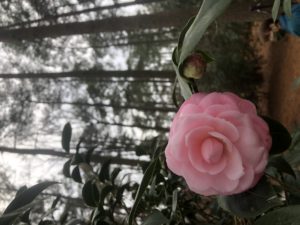
Camellias are well suited for the south eastern climate of USDA Hardiness Zones 7-9, though there are some varieties that will grow in Zone 6. There are several cultural factors that will lead you to success including SITE, SOIL, and MAINTENANCE.
CAMELLIA PLANTING SITE
High pine shade is the ideal location for growing camellias. They thrive under tall pines, where they get filtered, bright light year-round. Though camellias can grow in deep shade, they will not bloom well. The advantage of the high pine shade environment is the brightness through the summer, when they are setting flower buds, and the extra protection from winter winds. Of course, you can grow camellias without large pine trees, just focus on northern and eastern exposure where they will get morning sun and afternoon shade.
Protection from cold winter wind and sustained temperatures below 15F are needed, which is why camellias are generally grown in the mild climate of the southeast.
My former boss, David Parks, owner of Camellia Forest Nursery in Chapel Hill, NC always recommended planting camellias on “the north side of a south facing border.” That location results in winter shade, while the sun is low in the sky, and summer sun to ensure heavy bud set. My take on that is simple: site camellias in a location with WINTER SHADE and MORNING SUMMER SUN. Every property can have this scenario, even if the only shade is structural from your house.
Camellias appreciate good airflow, so don’t overcrowd your plants. Generally speaking, winter blooming camellias become large shrubs in ten years’ time. Unless otherwise noted, plan for them to grow to about 10-12’ tall by 8-10’ wide. Place them in an appropriate spot to accommodate that size.
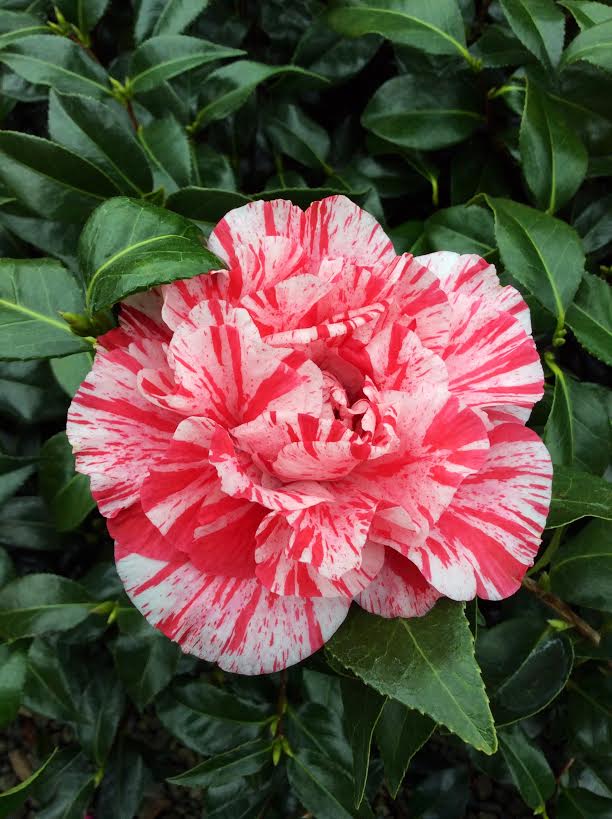
SOIL FOR CAMELLIAS
Camellias prefer moist, well-drained, acidic soil and are overly sensitive to “wet feet,” meaning soil that holds too much water. The best way to ensure long-term success is to amend heavy clay soils with organic matter, including ground leaves and aged pine bark often sold as soil conditioner. The key here is to keep your soil pH well below 7 (neutral). Always get a soil test before you start planting so you will know if the soil conditions will match the plants requirements.
In very wet areas, like the Gulf Coast, you will often find camellias planted on mounds, essentially above ground. This is a solution for gardens that stay soggy year-round. To employ this strategy successfully you need to make sure you create a mound that has a gentle slope of no more than 30 degrees to ensure the soil will not erode during heavy rains, exposing the root ball.
MULCH FOR CAMELLIAS
A light layer of mulch will help maintain even moisture in your soil as well as reduce weed infestations. Remember, camellias prefer acidic conditions, so pine straw or pine bark chips are an ideal mulch material. You can also apply a light layer, 1-2” of shredded hardwood or ground leaves.
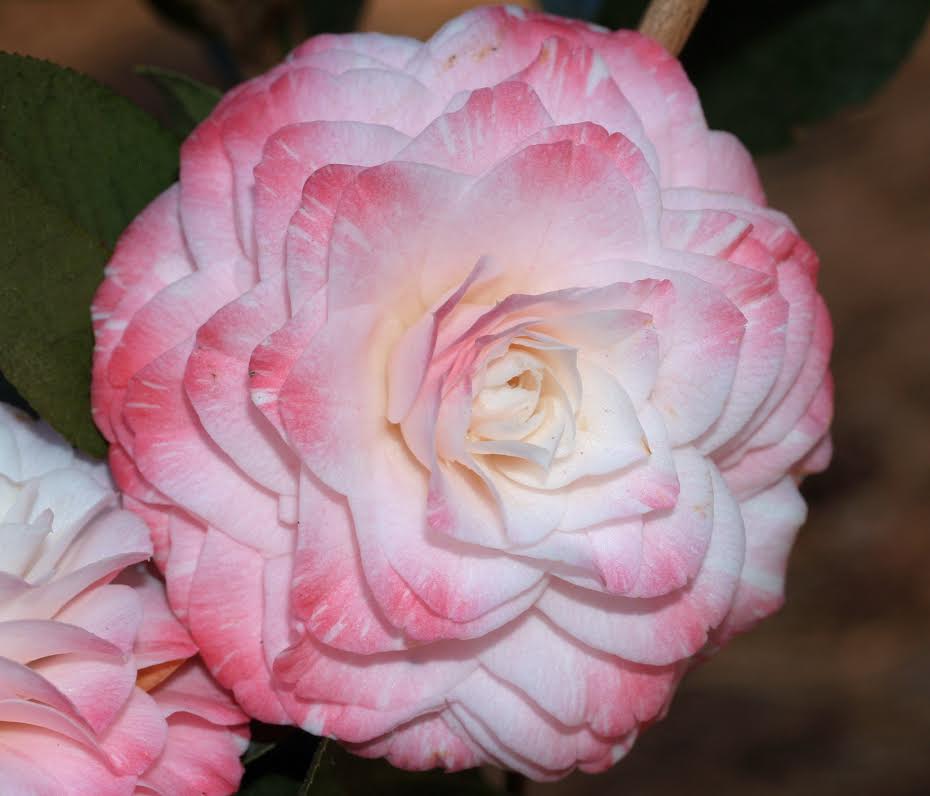
CAMELLIAS MAINTENANCE
Fertility is a common concern with home camellia growers. If you devote time to soil improvement you will not need to fertilize your camellias excessively. They are not heavy feeders. Early spring and mid fall are ideal times to apply an organic, acid-based fertilizer such as Holly-Tone. This will ensure the plants have the nutrients they need to thrive year-round.
WATERING
As I mentioned already, camellias are sensitive to over watering, so beware! In the first year after planting, supplemental irrigation may be necessary. However, once the plant is established, my recommendation is to water only as needed. Since camellias are a broad leaf evergreen, they don’t show the same signs of drought stress as deciduous plants. Instead, they show thirst through the coloration of their foliage. If the leaves go from glossy green to dull and yellowish, that is a sign that you need to add water. My rule of thumb is to only water established plants if you are experiencing more than a week of temperatures above 90F with no rain.
Pruning is another point of extreme confusion. To simplify it, remember this rule of thumb: always prune RIGHT AFTER THEY BLOOM. That way you will not be removing any flower buds. Camellias are very tolerant of hard pruning, often referred to as rejuvenation pruning. If you have a large overgrown camellia bush, you can cut it back hard in early spring and allow it to flush through the growing season. For more information on that visit the American Camellia Society: Pruning Camellias | American Camellia Society
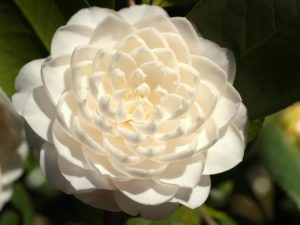 Sometimes animals, specifically deer, will prune for you. They seem to particularly like the tender new growth and flower buds. Metal cages constructed from chicken wire or cattle fence panels can be placed around young plants to ensure they don’t get eaten to the ground. Animal repellents, like I Must Garden are also an effective solution. Once your plants are established and growing taller than a deer can reach, you can rest easy.
Sometimes animals, specifically deer, will prune for you. They seem to particularly like the tender new growth and flower buds. Metal cages constructed from chicken wire or cattle fence panels can be placed around young plants to ensure they don’t get eaten to the ground. Animal repellents, like I Must Garden are also an effective solution. Once your plants are established and growing taller than a deer can reach, you can rest easy.
Speaking of pests, there are a few insects to be on look out for. Camellias are very susceptible to several types of “scale,” a soft bodied insect that colonizes on the backside of the leaf. If you see random yellow spots on the foliage, especially on lower branches, turn the leaf over and inspect for small white and brown lines.
Controlling scale is relatively easy through the application of “dormant oil” in the cool months or insecticidal soap through the summer. You can find more information on pesticide free ways to control scale here: Tea Scale | American Camellia Society
SELECTING THE RIGHT VARIETY OF CAMELLIAS
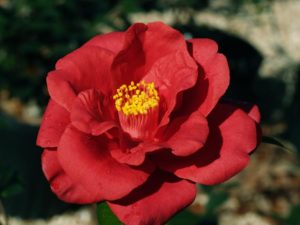
With so many species and hybrids available it can be overwhelming to choose the “right” variety to meet your needs. If you have the space to grow many camellias you can assemble a collection that will begin blooming in August and continue to bloom into May!
Here I have assembled a “Top 5” list of varieties that offer a long season of interest, historical interest, and cold hardiness. To be honest, I have never met a camellia I didn’t like, so it is REALLY difficult to narrow my recommendations down. Thanks for joining us in our winter blooming camellias guide!
BRIE’S TOP 5 WINTER BLOOMERS (ZONES 7-9)
Camellia ‘Crimson Candles’
C. japonica ‘Jacks’
C. japonica ‘October Affair’
C. japonica ‘Royal Velvet’
C. japonica ‘Seafoam’
THE BEST COLD HARDY CAMELLIAS (ZONE 6a-6b)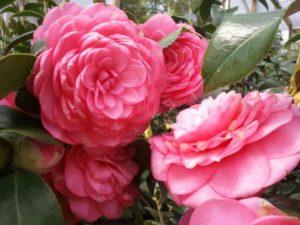
Camellia japonica ‘April Dawn’ zone 6b
C. japonica ‘April Remembered’ zone 6a
C. japonica ‘April Rose’ zone 6a
C. japonica ‘Korean Fire’ zone 6a
C. japonica ‘Korean Snow’ zone 6
HISTORIC ASIAN CAMELLIA CULTIVARS (ZONES 7-9)
Camellia japonica ‘Kumagai’
C. japonica ’Okan’
C. japonica ‘Magnoliaeflora’ (‘Hagoromo’)
C. japonica ‘Otome’ (‘Pink Perfection’)
C. japonica ‘Otome Alba’ (‘White Perfection’)
HISTORIC EUROPEAN CAMELLIA CULTIVARS (ZONES 7-9)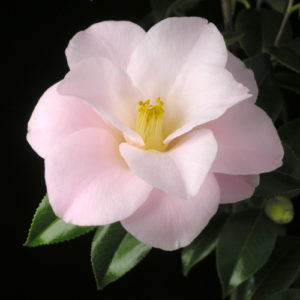
Camellia japonica ‘Alba Plena’
C. japonica ‘Bella Romana’
C. japonica ‘Lady Van Sittart’
C. japonica ‘Roma Rissorta’
C. japonica ‘Ville de Nantes’
HISTORIC AMERICAN CAMELLIA CULTIVARS (ZONE 7-9)
Camellia japonica ‘Grace Albritton’
C. japonica ‘Gov Mouton’
C. japonica ‘La Peppermint’

Recent Posts
- Smart Gardening: How Technology Is Revolutionizing Horticulture
- Understanding Gardening Zones: What You Need to Know
- The Right Tools For Your Gardening And Landscaping Needs
- Maximizing Your Harvest: Square Foot Gardening Chart for Beginners
- Holiday Garden Scents: Plants for Natural Aromatherapy in Your Home






